Immersed in history, the Lviv Region has rich pockets of eye-opening antiquity everywhere. The region and its capital city take their name from the time of Galicia-Volhynia, when Daniel of Galicia, the King of Rus’, founded Lviv; naming the city after his son, Leo. During this time, the general region around Lviv was known as Red Ruthenia (Cherven’ Rus’).
Lviv Oblast’s strategic position at the heart of central Europe and as the gateway to the Carpathians has resulted in its changing hands many times over the centuries. It was ruled variously by Great Moravia, Kievan Rus’, Poland, the state of Galicia-Volhynia (circa 1200 to 1340), then the Polish–Lithuanian Commonwealth (1340 to 1772), the Austro-Hungarian Empire (1772 to 1918), West Ukrainian People’s Republic and Poland again (1919 to 1939), was annexed by the USSR in 1939, then occupied by Nazi Germany (1941-1944) when most of the local Jewish population & culture were exterminated. After World War II Lviv Oblast again became part of the USSR lasting until 1991 when Ukraine declared its independence.
The City of Lviv is one of the most important cultural centres of Ukraine. The city is known as a centre of art, literature, music and theatre. Nowadays, the indisputable evidence of the city cultural richness is the large number of theatres, concert halls, creative unions, and also the array of annual artistic activities with more than 100 festivals, 60 museums, and 10 theatres.
Lviv’s historic city centre has been on the UNESCO World Heritage list since 1998.
Numerous architectural and historical monuments, as well as museums and theaters are interesting for excursions and tourism in the Lviv Region. In total, there are 886 archeological monuments, 3,822 historical monuments, 3,431 monuments of architecture and town planning , 302 monuments of monumental art in Lviv Oblast.
Lviv’s architecture reflects various European styles and periods. After the fires of 1527 and 1556 Lviv lost most of its gothic-style buildings but it retains many buildings in renaissance, baroque and the classic styles. There are works by artists of the Vienna Secession, Art Nouveau and Art Deco.
The buildings have many stone sculptures and carvings, particularly on large doors, which are hundreds of years old. The remains of old churches dot the central cityscape. Some three- to five-storey buildings have hidden inner courtyards and grottoes in various states of repair.
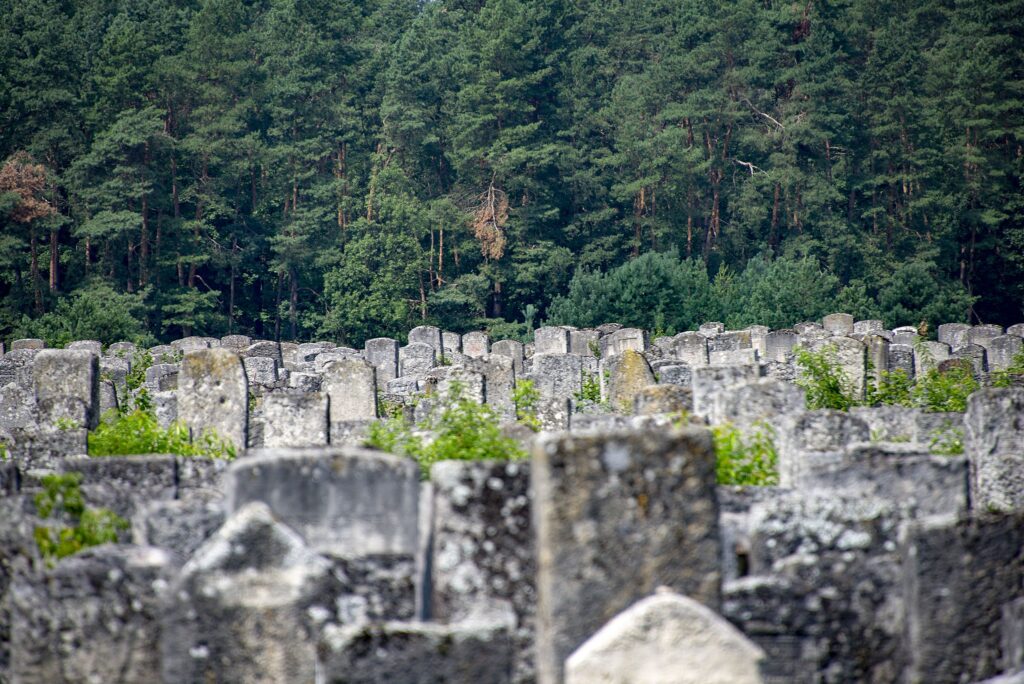
A crossroads and a Jewish trade center in the 19th century, Brody is considered to be one of the shtetls. It was particularly famous for the Brodersänger or Broder singers, who were among the first to publicly perform Yiddish songs outside of Purim plays and wedding parties.
Throughout centuries of Jewish life in Brody until the murderous events of the Holocaust, Jews and Gentiles lived a mostly segregated life, with distinct and separate social as well as religious life.
When German troops occupied the city in July of 1941, the Jewish population numbered some 9,000 souls. By May of 1943, all had been either deported to extermination camps, murdered in nearby forests, or had fled to other parts of Eastern Europe.
The Jewish Cemetery there [see photo] is the site of an estimated 20,000 graves.
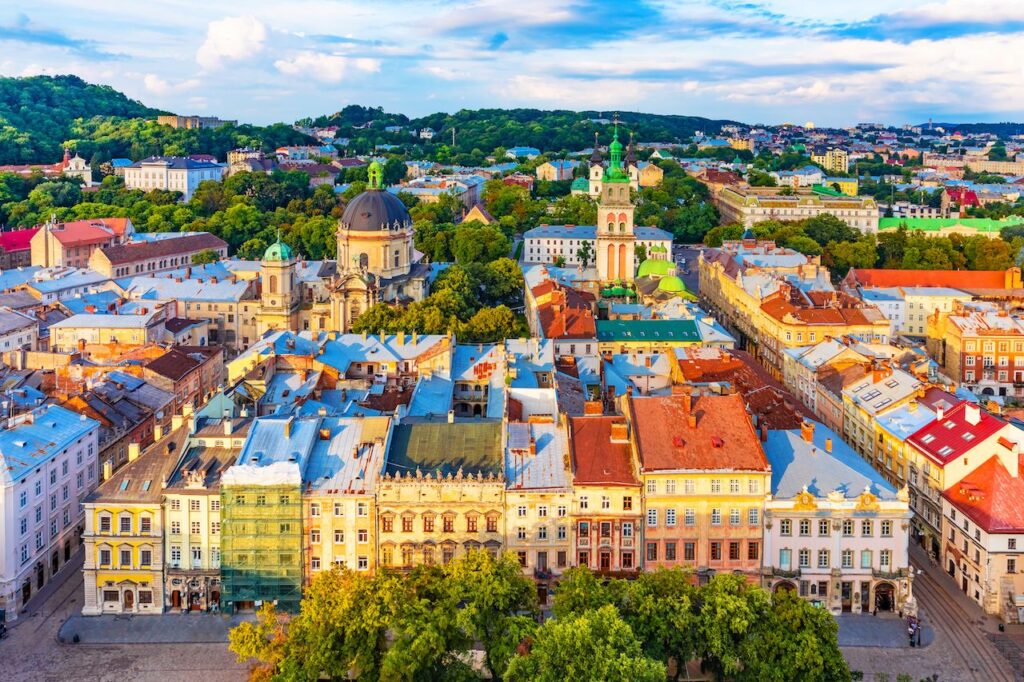 Lviv is the largest city in Western Ukraine, and the sixth-largest in Ukraine and is one of the main cultural centres of Ukraine. It was named in honour of Leo, the eldest son of Daniel, King of Ruthenia.
Lviv is the largest city in Western Ukraine, and the sixth-largest in Ukraine and is one of the main cultural centres of Ukraine. It was named in honour of Leo, the eldest son of Daniel, King of Ruthenia.
The city of Lviv is also historically known by different names in other languages – Russian: Львов, romanized: Lvov [lʲvof]; Polish: Lwów [lvuf]; German: Lemberg [ˈlɛmbɛʁk]; Yiddish: לעמבעריק, romanized: Lemberik.
The historical heart of the city, with its cobblestone streets and architectural assortment of Renaissance, Baroque, Neo-classicism and Art Nouveau, survived Soviet and German occupations during World War II largely unscathed. The historic city centre [see photo] is on the UNESCO World Heritage List.
The old walled city was at the foothills of the High Castle on the banks of the Poltva River. In the 13th century, the river was used to transport goods. In the early 20th century, the Poltva was covered over in areas where it flows through the city; the river flows directly beneath Lviv’s central street, Freedom Avenue (Prospect Svobody), and the Lviv Theatre of Opera and Ballet.
In February 1946, Lviv became a part of the Soviet Union. It is estimated that from 100,000 to 140,000 Poles were resettled from the city into the so-called Recovered Territories as a part of postwar population transfers. Expulsion of the Polish population and the Holocaust together with migration from Ukrainian-speaking surrounding areas from other parts of the Soviet Union, altered the ethnic composition of the city. The prevalence of the Ukrainian-speaking population has led to the fact that under the conditions of Soviet Russification, Lviv became a major centre of the dissident movement in Ukraine and played a key role in Ukraine’s independence in 1991.
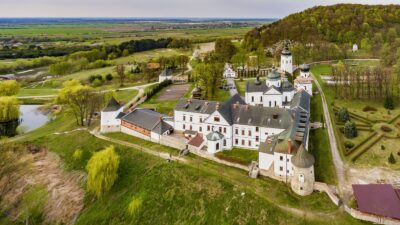
Krekhiv Monastery was established in the 16th century near Zhovkva by two monks from the Kyiv Pechersk Lavra who settled in nearby caves.
In the early 17th century the owner of Zhovkva, Stanisław Żółkiewski offered the monks land to build their monastery, and later surrounded it with fortifications during the second half of the 17th century to defend it from roaming Tatar hordes.
In the 1775 the monastery’s wooden buildings including the Church of the Assumption and its bell tower dating from 1658, were moved to the village of Krekhiv. Today they remain excellent examples of wooden church architecture of the period.
The monastery is known for its miracle working icons of the Mother of God and of St. Nicholas, the monastery’s patron saint. The largest annual pilgrimage to Krekhiv is held on the Feast of the Translation of St. Nicholas on May 22 (May 9 according to the Julian calendar).
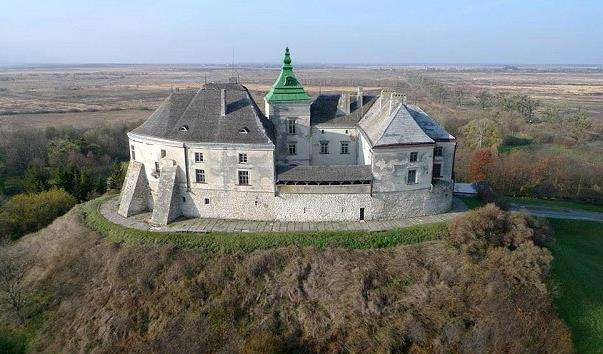 The Golden Horseshoe of Ukraine is a popular tourist destination in Lviv Oblast consisting of a ring of castles that includes Olesko Castle [see photo], Pidhirtsi Castle, and Zolochiv Castle.
The Golden Horseshoe of Ukraine is a popular tourist destination in Lviv Oblast consisting of a ring of castles that includes Olesko Castle [see photo], Pidhirtsi Castle, and Zolochiv Castle.
Olesko Castle, oval in shape, stands on top of a small hill, about fifty meters in height. A moat and a wall surrounds it, which served as a defence for the castle. The castle was, at different times, owned by Poland, Lithuania, and Hungary. Today, it is a museum, displaying the collections of antique furnishings and art dating from the 16th-17th centuries.
Pidhirtsi Castle was constructed in the 17th century by the Italian architect Andrea dell’Aqua. Built for leisure rather than for defensive purposes, it is more of a country house or palace, with a landscaped French- and English-style park and two churches who’s owners amassed a major collection of painting, sculpture, armor, and crafts, now managed by the Museum of Fine Arts in L’viv, which has overseen the site since 1991. The site is designated part of the National Cultural Heritage of Ukraine.
Zolochiv Castle was a residence of the Sobieski noble family built in the 17th century using the labor of enslaved Crimean Tatars. In the 19th century, the castle was adapted for use as a hospital and barracks, then subsequently turned into a prison and continued in use after the beginning of WW II. There is a chapel commemorating the victims of the NKVD on the grounds of the castle. Since 1985, the complex has been supervised by the Lviv Art Gallery and is open to visitors.
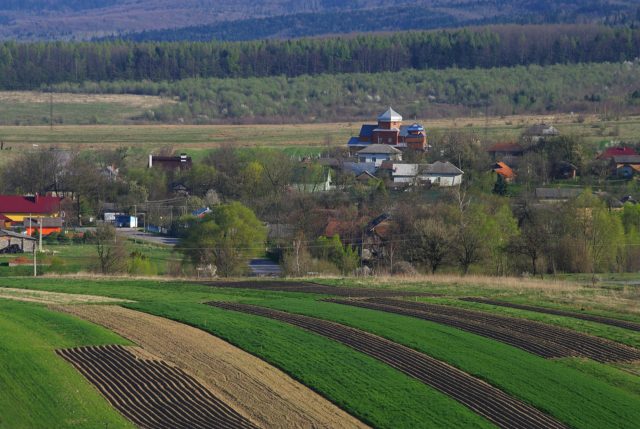
Nahuievychi is a village located in a picturesque corner in the foothills of the Carpathians of Drohobych district of Lviv Oblast, Ukraine.
It is the birthplace of poet and writer Ivan Franko (1856–1916), a famous Ukrainian activist, a Ukrainian poet, writer, doctor of philosophy, and ethnographer.
The village is the location of the Nahuyevychi State Historical and Cultural Preserve, a Ukrainian historic site designated in 1994 which contains the Franko’s farmstead and a museum.
The preserve structure includes: Ivan Franko’s parents’ lodge, and the Ivan Franko Museum, which houses such valuable works as his “Golden Book” of the Drohobytsk Normal School, as well as the first editions of his works. Behind the museum is the Ivan Franko’s Path with forest sculptures based on the writer’s life and work.
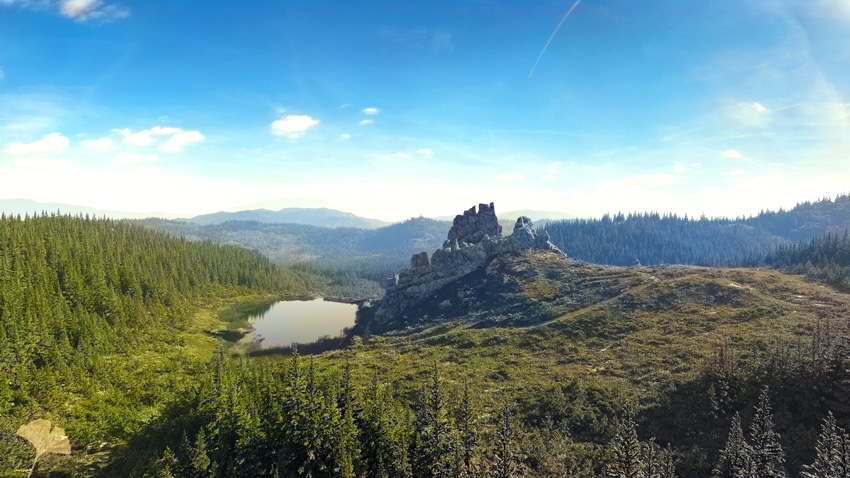
Tustan was a Medieval cliff-side fortress-city and customs site of the 9th—16th centuries, an Old Rus cliff-side defensive complex. Its remains are located in the Ukrainian Carpathians, in the Skole district of the Lviv Oblast.
The name “Tustan” has an Old Slavonic origin. It is a compound noun made of two parts: “Tu” + “Stan” which can be interpreted as “stand here”.
Tustan was a customs site for a salt trade route that passed through it via Drohobych, and then along the valleys of the Stryi and the Opir rivers, over the Carpathian passes and down to the western European countries.
This unique monument of history, archeology, architecture, and nature is situated amidst the woods of Pidhorodtsi Forestry and is part of the Tustan Site Museum first established in 1994.
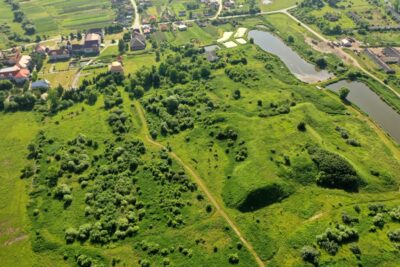
Zvenyhorod. Zvenyhorod’s Golden Age is attributed to the reign of Volodymyrko Volodarevych (1124–1141). He inherited Zvenyhorod in 1124 and turned it into a large prosperous town. Artifacts found in the territory of the town are evidence of a highly developed artisan industry including jewelry, bone carving, glass making, sewing, woodworking, blacksmithing, pottery, and the like. Residential buildings had wooden flooring. Foot paths within yards, passages, alleys and lanes were laid with wooden walkways as well. In January 1241 the town fell to the Tatars led by Batu Khan who burned the town to the ground leaving only a thick layer of ashes in its place. Zvenyhorod has never recovered.
The Ancient Zvenyhorod Museum of History established in 1987 is located near the site. A project planned for the development of an Ancient Zvenyhorod Park was established in 2018, Ukraine’s first historical and cultural park to be located on an archeological heritage site scheduled for opening in 2020.
In the village of Stilsko, Mykolayiv district, Lviv archaeologist Orest Korchynskyi discovered a unique archeological monument, Stilsko Settlement, the capital of White Croatia. Archaeological excavations found the remains of residential and craft buildings, household items, weapons, the armor of a rider and a horse, women’s jewelry. Some of the finds are open for review and stored in the local ethnographic museum.
It is rumored that below the surface there are the remains of an underground city.
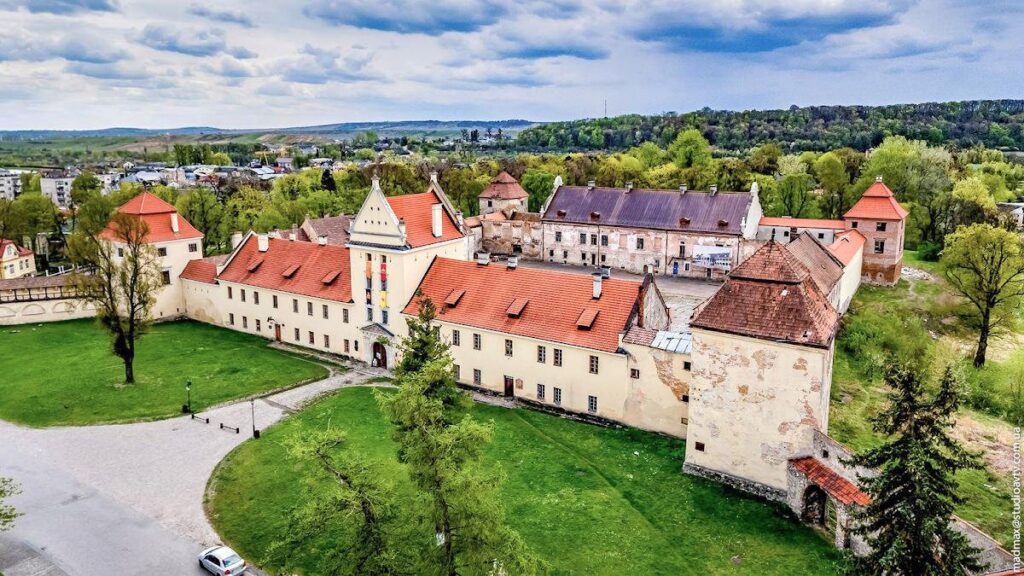
Zhovkva Castle occupies the principal square of the town of Zhovkva in Ukraine. It was founded by Polish Hetman Stanisław Żółkiewski as his fortified residence. Construction began in 1594 and was mostly completed in 1606.
In the 17th century, the town of Zhovkva [then Żółkiew] became the royal residence for King John III Sobieski of Poland, and a hub of religious life, arts and commerce. As a private town of Poland, Żółkiew was the property of the Żółkiewski, Daniłowicz, Sobieski and Radziwiłł families. During this period, most of the city’s landmarks were built, including the Zhovkva Castle and St. Lawrence’s Church, and the fortress-like Great Synagogue.
After the partition of Poland the castle fell into disuse and was auctioned off. During the 19th century the chapel and some other structures were dismantled or rebuilt to accommodate a local school. The castle sustained further damage during the First World War.
In 1939, following the Soviet invasion of Poland, Żółkiew, together with the rest of Poland’s Eastern borderlands, was occupied by the Soviet Union. In June 1941 the castle – then turned into a prison – was the site of an NKVD prisoner massacre of Poles and Ukrainians.
The town center of Zhovkva was declared a heritage site in 1994 and Zhovkva Castle is being converted into a culture and conference hall.
If you’ve got any questions, please do not hesitate to call, text or email us. We’re here to help you.
+380 (50) 242 75 54
dborysenko@gmail.com
ancestry@ukrainian-ancestry.com